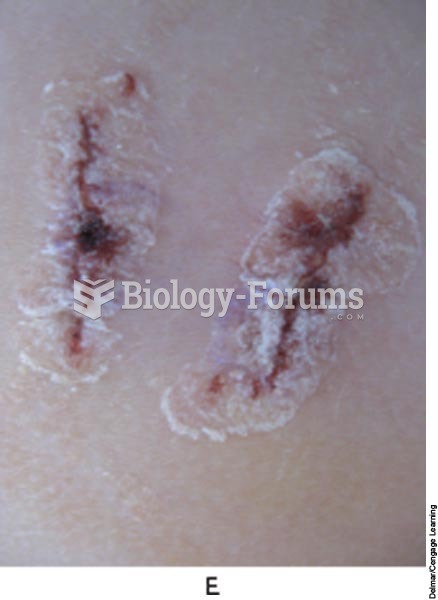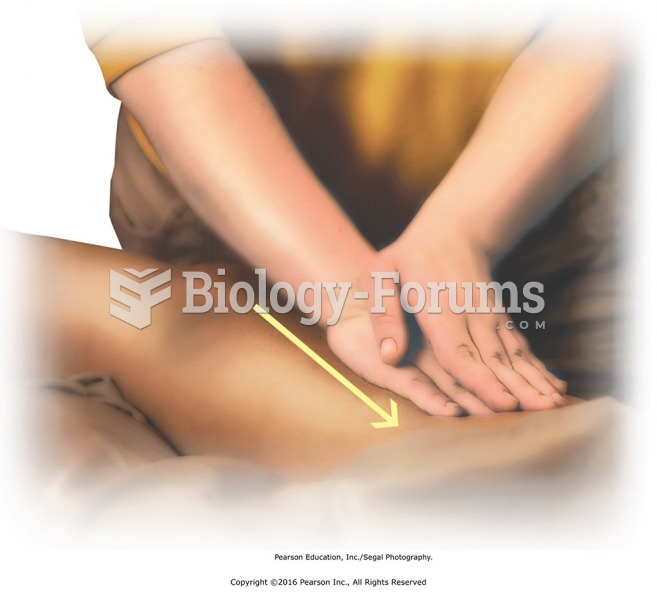This topic contains a solution. Click here to go to the answer
|
|
|
Did you know?
Signs and symptoms of a drug overdose include losing consciousness, fever or sweating, breathing problems, abnormal pulse, and changes in skin color.
Did you know?
The average human gut is home to perhaps 500 to 1,000 different species of bacteria.
Did you know?
It is widely believed that giving a daily oral dose of aspirin to heart attack patients improves their chances of survival because the aspirin blocks the formation of new blood clots.
Did you know?
The first documented use of surgical anesthesia in the United States was in Connecticut in 1844.
Did you know?
Everyone has one nostril that is larger than the other.
 Family interactions change in response to the developing child, and parenting characteristics, such ...
Family interactions change in response to the developing child, and parenting characteristics, such ...
 Effleurage to transition to forearm-distal to proximal. Apply effleurage with moderate pressure to ...
Effleurage to transition to forearm-distal to proximal. Apply effleurage with moderate pressure to ...





